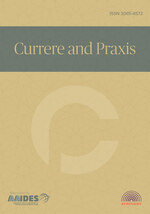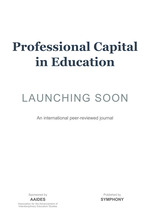Economic status differences in reading performance: A multiyear study of grade 4 Black boys in Texas
DOI:
https://doi.org/10.70116/298027419Keywords:
Economic status, poverty, Black, reading performance, Texas, STAAR Grade, boysAbstract
In this statewide, multiyear analysis conducted in the United States, the extent to which Grade 4 Black boys differed in their reading performance on the Texas state-mandated reading assessment as function of their economic status (i.e., economically disadvantaged and not economically disadvantaged) was determined. Analysis of three school years of Texas statewide data yielded statistically significant differences in reading by the economic status of Black boys. In all three school years and in all three reporting categories, Black boys who were in poverty answered statistically significantly fewer items correctly than Black boys who were not in poverty. Similarly, statistically significantly lower percentages of Black boys who were in poverty met the three grade level standards than Black boys who were not in poverty. Implications for policy and for practice, along with recommendations for future research, were provided.
Downloads
References
Cohen, J. (1988). Statistical power analysis for the behavioral sciences (2nd ed.). Lawrence Erlbaum.
Conradi, K., Amendum, S. J., & Liebfreund, M. D. (2016). Explaining variance in comprehension for students in a high-poverty setting. Reading & Writing Quarterly, 32(5), 427-453. https://psycnet.apa.org/doi/10.1080/10573569.2014.994251
Creswell, J. W. (2014). Research design: Qualitative, quantitative, and mixed methods approaches (4th ed.). Sage.
Field, A. (2013). Discovering statistics using SPSS (4th ed.). Sage.
Hamilton, H. A., & Slate, J. R. (2019). Differences in Grade 3 reading by economic status of students of color: A cause for concern. Asian Journal of Interdisciplinary Research, 2(4), 97-104. https://doi.org/10.34256/ajir19410
Harris, L. V. (2018). Differences in the reading performance of Texas Grade 4 students as a function of their economic status, gender, and ethnicity/race: A multiyear, statewide investigation (Unpublished doctoral dissertation). Sam Houston State University, Texas.
Harris, L. V., & Slate, J. R. (2017) Difference in reading by economic status of Grade 3 Black boys and girls. Annals of Language and Literature, 1(2), 20-27.
Hernandez, D. J. (2011). Double jeopardy: How third-grade reading skills and poverty influence high school graduation. etrieved August 27, 2023, https://www.aecf.org/resources/doublejeopardy/
Johnson, R. B., & Christensen, L. (2017). Educational research: Quantitative, qualitative, and mixed methods approaches (6th ed.). Sage.
Jones, G., Ostojic D., Menard, J., Picard, E., & Miller, C. J. (2017). Primary prevention of reading failure: Effect of universal peer tutoring at early grades. Journal of Educational Research, 110(2), 171-176. http://dx.doi.org/10/1080/00220671.2015.1060929
Lee, K., & Slate, J. R. (2014). Differences in advanced achievement outcomes for Texas students as a function of economic disadvantage. Journal of Education Research, 8(3), 137-149.
McGown, J. A. (2016). Differences in reading performance of Texas elementary school students as a function of economic status, gender, and ethnicity/race: A multiyear statewide study (Unpublished doctoral dissertation). Sam Houston State University, Texas.
National Center for Children in Poverty. (2017). Putting research to work for children and families. Retrieved August 15, 2023, http://www.nccp.org/profiles/TX_profile_7.html
National Center for Children in Poverty. (2019). United States demographics of poor children. Retrieved August 15, 2023, from http://www.nccp.org/profiles/US_profile_7.html
Paschall, K. W., Gershoff, E. T., & Kuhfeld, M. (2018). A two decade examination of historical race/ethnicity disparities in academic achievement by poverty status. Journal of Youth and Adolescents, 47(6), 1164-1177.
Reardon, S. F. (2013). The widening income achievement gap. Educational Leadership, 70(8), 10-16.
Sanchez, C. (2018). The gap between the science on kids and reading, and how it is taught. Retrieved July 7, 2023, from https://www.npr.org/sections/ed/2018/02/12/582465905/the-gap-between-the-science-on-kids-and-reading-and-how-it-is-taught
Sharkins, K. A., Leger, S. E., & Ernest, J. M. (2017). Examining effects of poverty, maternal depression, and children’s self-regulation abilities on the development of language and cognition in early childhood: An early head start perspective. Early Childhood Education Journal, 45(4), 493-498.
Texas Education Agency. (2016). 2016 Accountability Manual. Retrieved August 19, 2023, from https://tea.texas.gov/WorkArea/linkit.aspx?LinkIdentifier=id&ItemID=51539609586&libID=51539609586
Texas Education Agency. (2017). The New STAAR Report Card Presentation. Retrieved August 19, 2023, from http://www.stamford.esc14.net/page/open/1039/0/Introducing%20the%20New%20STAAR%20Student%20Report-Guide%20for%20Parents%201.pdf
Texas Education Agency. (2021). Enrollment in Texas Public Schools 2020-21. Retrieved August 19, 2023, from https://tea.texas.gov/sites/default/files/enroll_2020-21.pdf
United States Department of Agriculture Food and Nutrition Services. (2017). Child nutrition programs: Income eligibility guidelines. Federal Register, 82(67), 17182-17185.
United States Department of Education. (2017). Every Student Succeeds Act. Retrieved July 22, 2023, from https://www.ed.gov/esea
Downloads
Published
How to Cite
Issue
Section
License
Copyright (c) 2023 Symphony

This work is licensed under a Creative Commons Attribution 4.0 International License.














